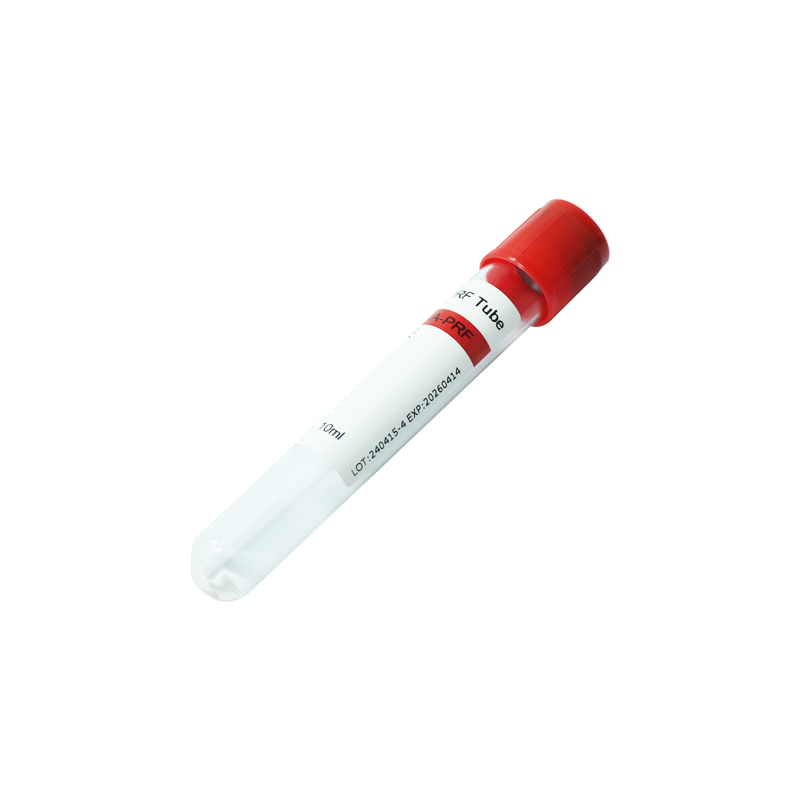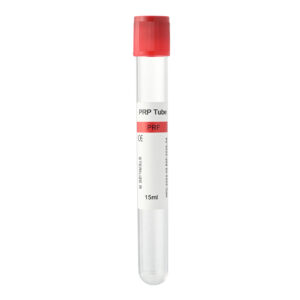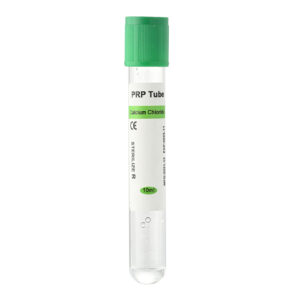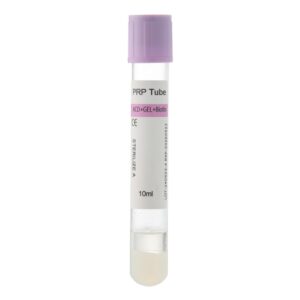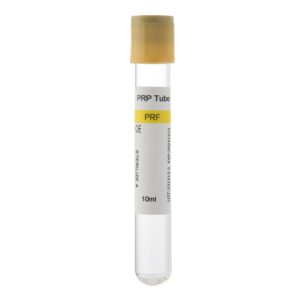What is A-PRF? Advanced Platelet-Rich Fibrin is an innovative biomaterial in regenerative medicine. Derived from autologous blood through centrifugation, Is rich in high concentrations of platelets and growth factors. Its dense fibrin matrix significantly enhances tissue healing and regeneration.
Fundamentals
Platelet-Rich Fibrin (PRF)
It contains platelets, leukocytes, and fibrin. These components synergistically release various growth factors, such as Platelet-Derived Growth Factor (PDGF), Transforming Growth Factor-β (TGF-β), and Vascular Endothelial Growth Factor (VEGF), which significantly promote wound healing, tissue regeneration, and inflammation modulation.
Advanced Platelet-Rich Fibrin
Is an improved version of PRF, obtained through optimized centrifugation parameters to achieve higher concentrations of platelets and growth factors and form a denser fibrin matrix. This improvement ensures the stable release of growth factors and prolonged biological activity in a-PRF, significantly enhancing its regenerative and reparative capabilities.
Applications of A-PRF
- Dental and Oral Surgery: a-PRF is widely used in periodontal tissue regeneration, alveolar bone augmentation, and post-extraction wound healing. Its high concentration of growth factors accelerates tissue repair, shortens healing time, and improves surgical success rates.
- Bone Tissue Repair: A-PRF is used for fracture repair and bone defect filling in orthopedic surgery. Its rich growth factors promote osteoblast proliferation and new bone formation, accelerating bone healing.
- Soft Tissue Repair: In dermatology and plastic surgery, a-PRF is used to treat chronic wounds, burns, and skin grafts. It significantly enhances wound healing and helps reduce scar formation.
Advantages of A-PRF
- High Biocompatibility: Derived from the patient’s blood, a-PRF has excellent biocompatibility, with minimal risk of rejection or allergic reactions.
- Sustained Release of Growth Factors: The dense fibrin matrix in a-PRF provides sustained release of growth factors, offering prolonged biological activity and promoting long-term tissue repair.
- Simple Preparation: The preparation process for a-PRF is relatively simple and cost-effective, requiring no complex equipment or expensive reagents, making it convenient for clinical application.
- Broad Application Prospects: a-PRF shows vast application potential in various medical fields, making it an essential tool in regenerative medicine due to its superior regenerative capability and simple preparation method.
- Accelerated Healing: a-PRF can shorten post-surgical healing time, reduce patient discomfort and recovery periods, and improve overall treatment outcomes.
Comparison between
- Concentration of Platelets and Growth Factors:
- PRF: PRF has relatively high concentrations of platelets and growth factors, but centrifugation may cause some loss of growth factors and platelets.
- A-PRF: a-PRF, through optimized centrifugation parameters, increases the concentration of platelets and growth factors, maximizing the retention of active components from the blood.
- Fibrin Matrix:
- PRF: PRF has a relatively loose fibrin matrix, with growth factors released quickly, providing a short-term peak.
- A-PRF: a-PRF has a denser fibrin matrix, offering a more stable and sustained release of growth factors providing long-term support.
- Biological Activity:
- PRF: The biological activity of PRF is limited by the rate and concentration of growth factor release, resulting in a relatively short-term effect.
- A-PRF: With higher growth factor concentrations and a denser fibrin matrix, a-PRF’s biological activity is significantly enhanced, promoting tissue regeneration more effectively and durably.
- Preparation Process:
- PRF: The preparation process for PRF is relatively simple, with fixed centrifugation time and speed.
- A-PRF: The preparation of a-PRF requires more precise centrifugation parameter control to ensure optimal platelet and growth factor concentrations.
Differences in Application Environments
- Dental and Oral Surgery:
- PRF: Widely used in periodontal tissue regeneration, alveolar bone augmentation, and post-extraction wound healing, suitable for most routine dental surgeries.
- APRF: More suitable for complex periodontal surgeries and dental procedures requiring long-term support, such as periodontal disease treatment and extensive bone defect repair.
- Bone Tissue Repair:
- PRF: Used for general fracture repair and small-scale bone defect filling.
- APRF: More effective in bone repair surgeries requiring higher growth factor concentrations and longer support times, such as extensive bone grafts and complex fracture repairs.
- Soft Tissue Repair:
- PRF: Applied to acute wounds, mild burns, and small-scale soft tissue repairs.
- APRF: Suitable for chronic wounds, severe burns, and soft tissue repairs requiring long-term Healing, such as skin grafts.
Which is More Advantageous?
From the perspectives of biological activity, tissue regenerative capability, and application range, It has clear advantages over traditional PRF. Its higher concentrations of platelets and growth factors, denser fibrin matrix, and prolonged growth factor release make it more effective in promoting tissue repair and regeneration in various medical fields. However, the preparation process for a PRF is relatively complex, requiring more precise operations and equipment support, making PRF a cost-effective choice in some basic medical settings.

